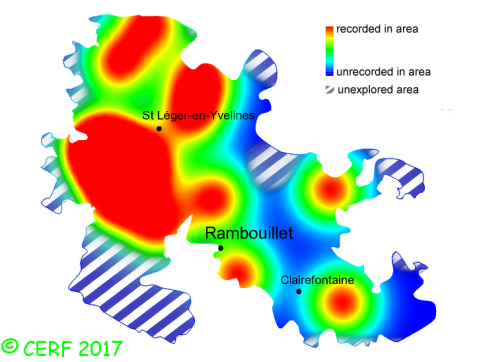| Russula sardonia Fr. |
|
|
|
|
|
|
The cap is violet red to vinaceous; its margin is smooth. The cap surface is smooth, not viscid nor sticky. The stem is pink to pale violet, without ring. The flesh is unchanging; its taste is acrid; the odour is faint, fruity; its texture is grainy (breaking like a chalk stick). The gills are golden yellow, adnate to decurrent, crowded (nb of gills per 90° ~ 42 ). The spore print is cream to very light ochre. This species is mycorrhizal. It grows on the ground, in coniferous woods, on a rather acid soil, with pine. The fruiting period takes place from July to November.
Chemical tests : flesh becoming salmon pink when in contact with iron sulphate; quick reaction to Ga´ac (bright blue); strong purple reaction of cap cystidia to sulpho-vanillin; flesh and gills becoming pink when in contact with ammonia. Distinctive features : Purple to red-brown cap surface, shiny when damp, sometimes umbonate; lemon-yellow gills; Stem washed with pale lilac at mid-height; acrid taste; flesh with lemon-yellow tinge, turning red with ammonia; under conifers only (pines) Russula sardonia is occasional and widely present in the forest of Rambouillet, and is frequent, more generally speaking . | ||
|
page updated on 14/01/18

